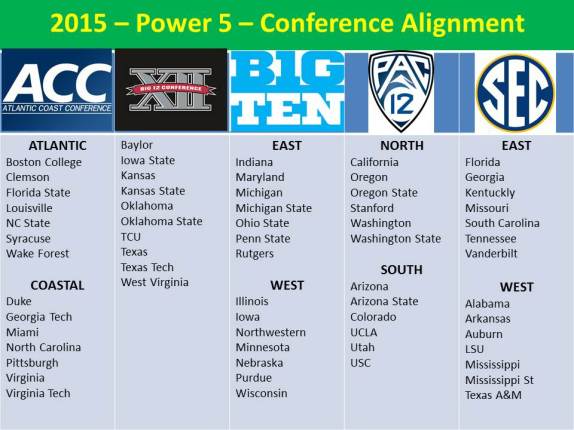March Madness is now upon us and SOD gets just as caught up in the basketball hysteria as many others of you. I, too, will fill out a bracket that gets all busted before the end of the 1st weekend. It’s a yearly tradition in our house; my wife, who doesn’t follow the game very closely, and I, who watches intently all season long, will each fill out brackets and track our results. She has about a 15 year winning streak going on me – she always kicks my football lov’n backside. But, this is a College Football Blog and it is Trivia Tuesday; so, today’s trivia will focus on Football and Basketball.
QUESTION #1. You probably heard in the build up to the National Championship game the coincidence that Ohio State and Oregon also played in the first ever NCAA Men’s Basketball Championship. The then called Webfoots from Oregon beat Ohio State, 46 – 33 in that game. But, do you know what other two teams made up the first Final Four?
QUESTION #2. This one is pretty easy. SOD looked to see how many times the same school was the reigning Football Champion and Basketball Champion. It has only happened once and that was pretty recently. What is the only school to be both Football Champions and Basketball Champions in the same off season? (It gets weird because the Football Champion is listed as the previous year – but, they would both be Champions over the same summer.) Not only that, but they achieved this feat by beating the same school in the championship for each sport.
QUESTION #3. Now here’s the tougher one. To make what the team that is the answer to Question #2 did so remarkable, there are only 10 schools that have ever won at least 1 of each national championships over all the years. Name the 10 schools that have at least 1 National Football Championship and 1 National Basketball Championship.
THE BUFFER ZONE
ANSWER #1. In the semi-finals of that first ever NCAA Championship Tournament, Ohio State defeated Villanova, 53 – 36 in the East Bracket and Oregon defeated Oklahoma, 55 – 37 in the West. The entire tournament consisted of only 8 teams and was played on the campus of Northwestern University in Evanstown, IL.
ANSWER #2. The Florida Gators won the BCS Championship Game over Ohio State to conclude the 2006 season and then won the 2007 NCAA Basketball Championship by beating the Buckeyes again on the hardwood.
ANSWER #3. The 10 schools to have at least 1 National Football Championship and 1 NCAA Basketball Championship are:
Arkansas – Football Co-Champs in 1964 (with Alabama and Notre Dame); Basketball Champs in 1994
California – Football: 1920, 1921 (with Cornell), 1922 (with Cornell); Basketball: 1959
Florida – Football: 1996, 2006, 2008; Basketball: 2006, 2007
Maryland – Football: 1953; Basketball: 2002
Michigan – Football: 1901, 1903 (with Princeton), 1904 (with Pennsylvania), 1918 (with Pittsburgh), 1923 (with Illinois), 1933, 1948, 1997 (with Nebraska); Basketball: 1989
Michigan State – Football: 1952, 1965 (with Alabama), 1966 (with Notre Dame); Basketball: 1979, 2000
Ohio State – Football: 1942, 1954 (with UCLA), 1957 (with Auburn), 1961 (with Alabama), 1968, 1970 (with Nebraska and Texas), 2002, 2014; Basketball: 1960
Stanford – Football: 1926 (with Alabama); Basketball: 1942
Syracuse – Football: 1959; Basketball: 2003
UCLA – Football 1954 (with Ohio State); Basketball: 1964, 1965, 1967, 1968, 1969, 1970, 1971, 1972, 1973, 1975, 1995
NOTE: This information is from the NCAA List of recognized champions. SOD did not look at NIT Champions for the years that this was the premier end-of-season basketball championship.

